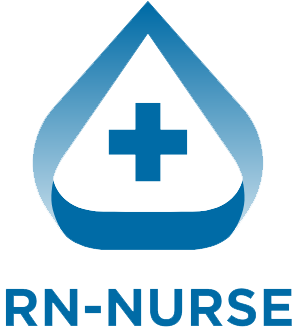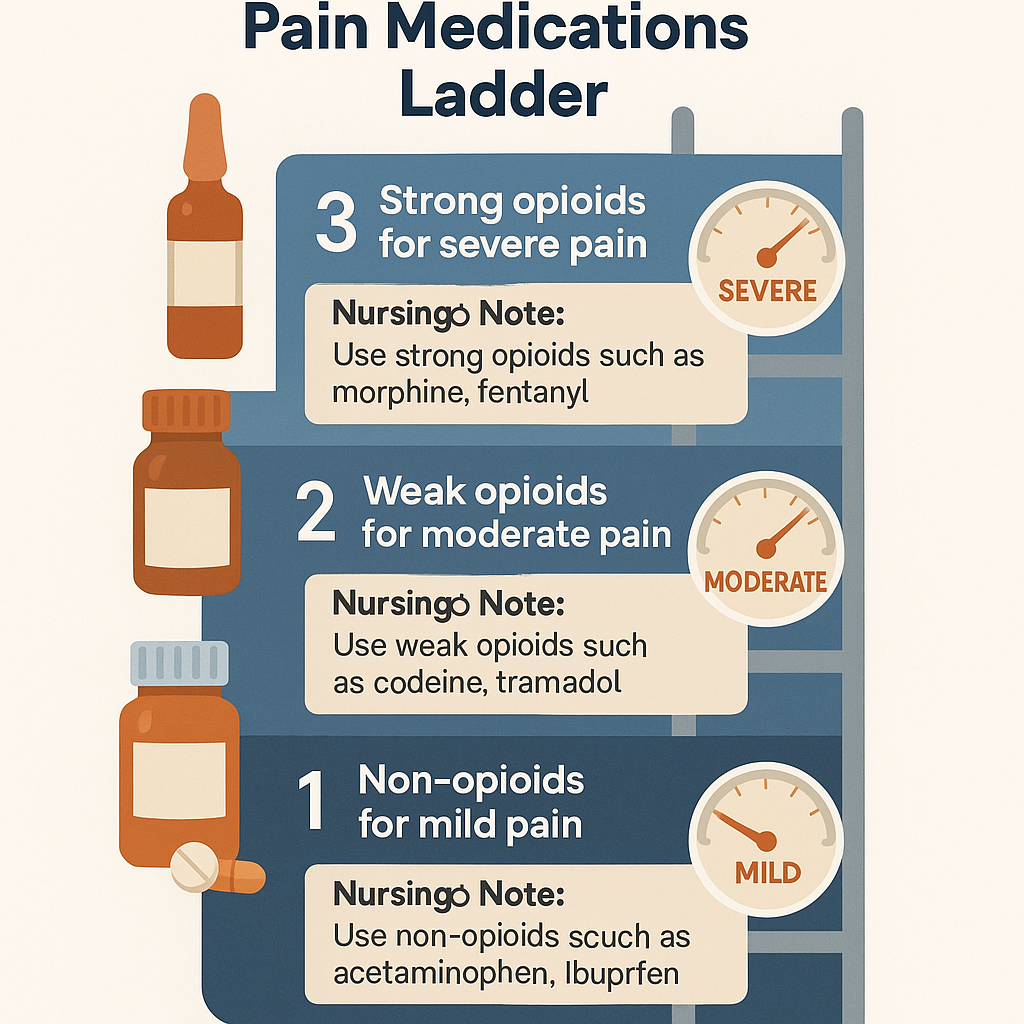Managing pain effectively is one of the most important responsibilities of a nurse. Whether preparing for the NCLEX exam or practicing as a registered nurse (RN nurse), understanding the pain medication ladder helps guide safe, stepwise management of pain. For both students and experienced clinicians, this knowledge is a cornerstone of pharmacology and a vital part of every nursing bundle.
What Is the Pain Medications Ladder?
The World Health Organization (WHO) pain ladder was originally developed to guide the treatment of cancer pain but is now widely applied in general pain management. It outlines a stepwise approach:
- Mild pain → Non-opioids (e.g., acetaminophen, NSAIDs).
- Moderate pain → Weak opioids (e.g., codeine, tramadol), often in combination with non-opioids.
- Severe pain → Strong opioids (e.g., morphine, fentanyl, hydromorphone).
This progression helps nurses escalate treatment safely while minimizing risks.
Step 1: Non-Opioids (Mild Pain)
- Examples: Acetaminophen, ibuprofen, aspirin, naproxen.
- Nursing notes:
- Monitor for GI upset or bleeding with NSAIDs.
- Be cautious with liver function in patients taking acetaminophen.
- Teach patients about maximum daily doses to avoid toxicity.
💡 NCLEX Tip for Nurses: If a patient reports mild pain, non-opioids should be the first step before moving to stronger medications.
Step 2: Weak Opioids (Moderate Pain)
- Examples: Codeine, hydrocodone, tramadol.
- Nursing notes:
- May cause constipation, sedation, or nausea.
- Combine with non-opioids for greater effect.
- Teach patients safe storage to prevent misuse.
💡 Registered Nurse Reminder: Always assess pain before and after administration to evaluate effectiveness.
Step 3: Strong Opioids (Severe Pain)
- Examples: Morphine, fentanyl, oxycodone, hydromorphone.
- Nursing notes:
- Monitor for respiratory depression.
- Assess sedation level regularly.
- Use stool softeners or laxatives to manage opioid-induced constipation.
- Titrate carefully for safe, effective relief.
💡 NCLEX Prioritization Point: In a patient on opioids, respiratory rate below 12/min is an immediate red flag.
Safe Practice for Nurses
- Always start with the lowest effective dose.
- Reassess frequently using a pain scale.
- Educate patients and families about side effects.
- Document interventions and responses clearly.
- Be mindful of tolerance, dependence, and addiction risks.
📌 Nursing Bundle Insight: Pain management isn’t just about medications. Non-pharmacological interventions—such as relaxation, positioning, and cold/heat therapy—should always complement drug therapy.
Final Thoughts
For any RN nurse or nursing student preparing for the NCLEX, mastering the pain medications ladder is essential. It allows nurses to provide patient-centered care while ensuring safety in both acute and chronic settings. Every nurse should feel confident in applying this stepwise approach to pain, always balancing effectiveness with safety.
By keeping these principles in mind, you’ll not only succeed on the NCLEX but also strengthen your practice as a compassionate and skilled registered nurse.

